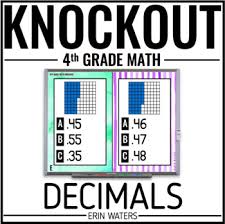
Math Lines Small Large is among the many mathematics games that are available. It is an excellent way to introduce young people to the basic concepts and principles of geometry. This game can be played on either a desktop or mobile device. It focuses on developing math skills. It runs directly in your browser, and is optimized to work on Android and iOS devices. Players must form pairs that add up to 10 to get a numbered ball to shoot past the math line. After the shoot, the player must clear any math lines so the next numbered balls can be taken. As the player progresses in the game, it becomes more difficult.
Two points are what define a mathline. A line contains the shortest path from any point to another point on the line. The equation of an line is r=l[b-a], where b refers to the value for the line where it crosses x-axis. A refers to the value for the line where it crosses y-axis. A line is also called a curve. The equation of a curvature is r=cd+l(0)b-a.

Lines can also be described using properties like slope or tangent. A line with zero slope is the line that passes through the origin. The equation for a line having a slope below zero degrees is y=mx + b. Lines having slopes less than 0 degrees indicate a horizontal surface. Lines with slopes greater then 0 degrees indicate a vertical surface. The angle difference identity for sine can also be used to derive the equation for a line.
You can draw lines in parallel or collinear. They can also exist perpendicularly or skew. Parallel lines are lines which are located in the same plane. Skew lines are not like parallel lines. They do not intersect at any point. Euclid, a 300-year-old Greek philosopher, established skewlines. Skew lines can be defined in a number of different planes.
Lines are also used for describing other types of objects like cylinders and prisms. An arrangement can also define a line. You can arrange a straight line in a square, sexless, or rectilinear way. An arrangement of lines in certain cases is called a curve. A curve that is placed in a sexless or rectangular form is known as an arc. A straight line is a simple, elegant line. The line can also adopt a disguise. If a straight line is arranged in a sexless, rectilinear, or square form, the line is called a line segment.
Lines can be specified with parametric equations. These equations rely on the specification of a line's point. Parametric equations can be used to specify lines within two-dimensional or three-dimensional spaces. Higher dimensions are determined by specifying a direction vector.

Two types of equations are used to define lines in planes. When a line is in a plane, the first degree equations define it. The general form is an equation with fixed coefficients.
FAQ
What are the requirements to be a teacher in early childhood education?
First, you must decide if early childhood education is what you want to pursue. You will need to earn your bachelor's degree if you decide to pursue a career in early childhood education. Some states require that students earn a master’s degree.
You'll likely have to take classes during the summer. These courses include topics like pedagogy (the art and science of teaching) or curriculum development.
Many colleges offer associate degrees that can lead to teaching certificates.
Some schools offer certificates or bachelor's degree in early childhood education. But others only offer diplomas.
There may not be any need for additional training if your goal is to teach from home.
What is homeschooling exactly?
Homeschooling is an educational method where children are educated at home by their parents. It is also known as private education, self-education, or home educating.
Family members who want to teach their children at home can opt for homeschooling. This allows them access to a quality education while staying at home.
From birth, parents educate their children until high school. They decide on the subjects they want to study and how much time each subject should take. Each student learns all on their own.
Parents choose when to start teaching their children. Schools recommend that children begin classes between the ages of four and twelve. Some families decide to wait until kindergarten to start teaching their children.
Parents may use any number of resources to guide them through the curriculum. There are many resources that can help you learn. These include videos, books, websites, magazines and even magazines.
Many families find homeschooling works well for their busy schedules. Homeschooling allows parents to spend more time with their children, than traditional public schools.
How much time should I spend studying each semester?
The length of your studies will depend on several factors.
These factors are not the only ones. Some schools may also require you to take certain classes each year. This means that you won’t be able to choose which courses you want to take in any given semester. Your advisor will tell you which courses are required for each semester.
Should I choose to specialize in a single subject or branch out into other areas?
Many students choose to specialize in one subject (e.g., English, History, Math) instead of branching into multiple subjects. But, you don't always have to specialize. If you are interested in becoming a doctor, you can choose to specialize either in internal medicine or surgery. You can also choose to be a general practitioner, specializing either in pediatrics or family practice, psychiatry, gerontology, or neurology. If you're considering a business career, you could concentrate on marketing, management, finance, human resources, operations research, or sales. The decision is up to you.
How do I apply to college?
There are many options for applying to college. Start by speaking with your high school admissions counselor. Many high schools use online applications. Contact local colleges for more information. Most colleges will accept applications over the Internet through their website.
If you decide to apply through the mail, you'll need to fill out the application, write a personal statement, and send copies of all required documents with your application. Your personal statement is a chance to explain why you are interested in attending this institution and what it would mean for you. This personal statement also helps admissions officers understand your goals and motivations.
On our website, you will find samples of essays that can be downloaded.
Is there a specific skill required for my chosen profession?
If you want to become a lawyer, you'll need good written communication skills. To be a nurse you need to be able communicate with patients. You will need to be able to use math skills to become an accountant. These are only a few examples. Take a look at all the things that you love doing. What type of job would allow you to do these things again? You will need to know how to design machines and structures if you want to become an engineer. Basic math is essential to be successful in this field. Business success requires a solid understanding of statistics and numbers. Communication skills are essential for teachers and other professions. You'll need to be able to teach others and help them learn.
How much does homeschooling cost?
Homeschooling is free. There are no set fees. Some families charge between $0-$20 per lesson. Some families offer services for free.
But homeschooling is not easy. It requires commitment and dedication. Parents should have enough time for their children.
They should also have easy access to books, supplies, as well as other learning tools. To supplement their education, homeschoolers may need to use community programs and events.
Parents should consider the cost of transportation, tutors, extracurricular activities, and other expenses.
Homeschoolers also need to plan for field trips, vacations and special occasions.
Statistics
- They are more likely to graduate high school (25%) and finish college (116%). (habitatbroward.org)
- Among STEM majors, that number is 83.5 percent. (bostonreview.net)
- “Children of homeowners are 116% more likely to graduate from college than children of renters of the same age, race, and income. (habitatbroward.org)
- Globally, in 2008, around 89% of children aged six to twelve were enrolled in primary education, and this proportion was rising. (en.wikipedia.org)
- Data from the Department of Education reveal that, among 2008 college graduates, 92.8 percent of humanities majors have voted at least once since finishing school. (bostonreview.net)
External Links
How To
what is vocational education?
Vocational education is an educational program that prepares students to work after high school and college. It teaches them specific skills for specific jobs (such as welding). Vocational Education also offers apprenticeship programs that provide on-the-job training. Vocational education stands out from general education. This is because it focuses less on general knowledge and more on developing skills for specific occupations. The goal of vocational education is not necessary to prepare people for university study but to help them find jobs upon graduation.
Vocational education is available at all levels of education, including primary, secondary, high school, college, universities, technical institutes as well as trade schools, community colleges and junior colleges. There are also many specialty schools like nursing schools and law schools, legal schools, medical schools and dental schools as well as veterinary medicine, veterinary medicine, firefighting, police academies and military academies. These schools offer both practical and academic training.
In recent decades, many countries have made large investments in vocational training. However, the effectiveness of vocational education remains controversial. Some critics claim it is not effective in improving students' employability. Others argue that it helps them prepare for life after school.
According to the U.S. Bureau of Labor Statistics 47% of American adults have a postsecondary certificate. This number is higher for those with higher education. 71% of 25-29-year-olds have a bachelor's or higher degree and are employed in areas that require postsecondary credentials.
According to the BLS, nearly half of America's adult population held at least one postsecondary credential in 2012. A third of Americans have a two-year associate's degree and 10% hold a four year bachelor's degree. One in five Americans holds a master’s degree or doctorate.
In 2013, the median annual wage for persons holding a bachelor's degree was $50,900, compared to $23,800 for those without a degree. The median wage for advanced degrees holders was $81,300.
The median income for those who have not completed high school was just $15,200. For those who did not complete high school, the median annual salary was only $15,200.